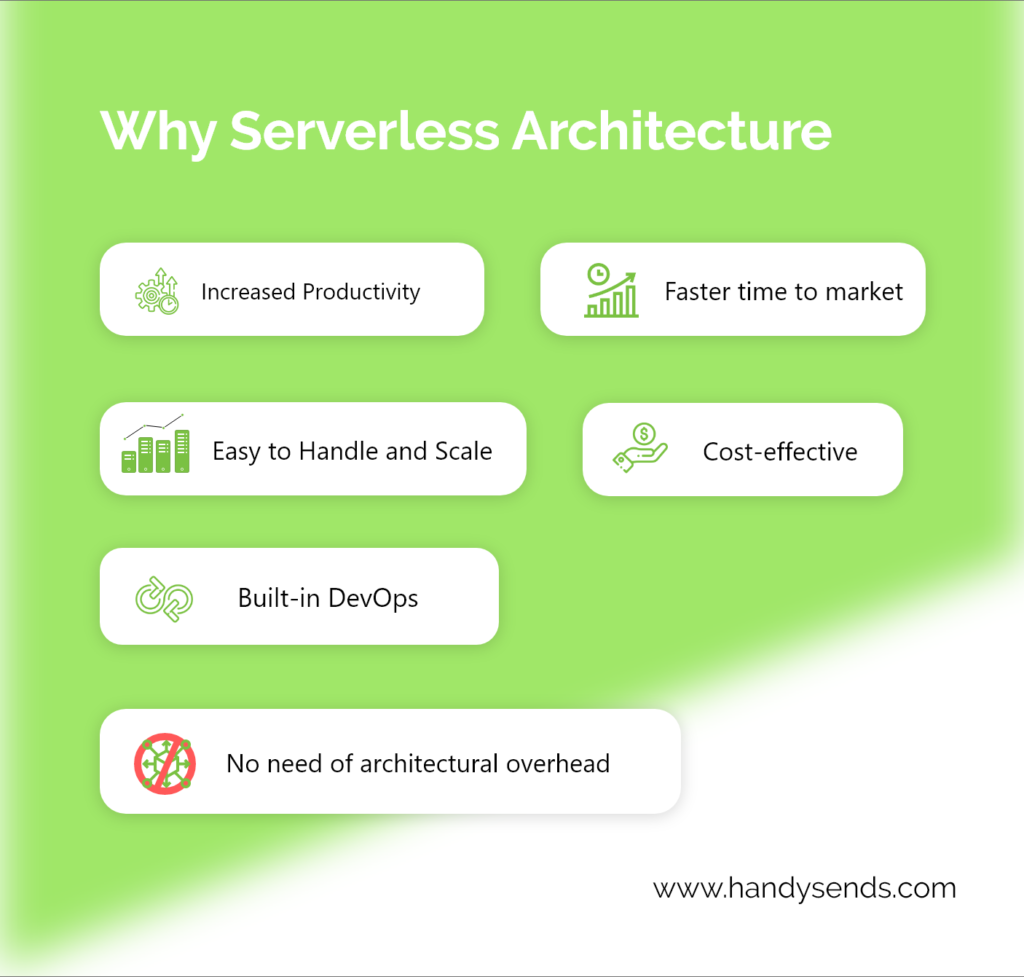What exactly is Serverless Architecture and how does it function?
Serverless architecture is an approach to building and running applications and services without overseeing infrastructure. It is an approach to depicting the services, practices, and methodologies that empower you to build more agile applications so you can innovate and react to change quickly. Your application runs on servers, a third party does all your server management, so you can focus on just writing code that serves your clients. You at this point don’t have to provision, scale, and maintain with servers to run your applications, databases, and storage systems.
Types of Serverless Architecture Softwares
FaaS
In the domain of pre-bundled services, Function-as-a-Service refers to Framework-as-a-Service or FaaS, which falls in the middle of Software-as-a-Service and Platform-as-a-Service.
This model just deploys your code, and the server consequently runs it. Developers need not stress over the hosting environment. It can deliver customizable templates. FaaS uses containers to prime for quick deployment of applications on all platforms.
FaaS profit with further developed proficiency as companies spent fewer assets on quick advancement of utilizations.
BaaS
Like FaaS, Backend-as-a-Service (or BaaS) is another serverless technology. This model assists with automating the backend development and deals with the cloud framework. Here Frontend interacts with the backend through API. BaaS features are notification, user management, Authentication, versatile database, and API.
Here is a simple method to see BaaS: envision your company is developing an application to connect employees regarding important information. You may develop the application structure in-house and outsource the functionality. This incorporates backend measures like access cloud storage, syncing and social collaboration.
BaaS is a company’s capacity to offer backend services that connect a versatile application to the cloud.
Why Serverless Architecture?
Following the struggles of the previous year, it’s worth considering what serverless architecture may provide to a business and why it should be used.
Here are few reasons why we should use Serverless Architecture:

Serverless architecture can carry a great deal to a business.
It gives an approach to keep the business focused on itself and its core application. Thus, you don’t need to stress over having an entire team of framework engineers, platform engineers, administrators, and so forth the application team could be stringently accountable for that since the hosts handle all the other things.
Serverless diminishes cost and increases delivery speed. The pricing depends on the genuine expense of assets consumed by the application. BaaS lessens the development cost while FaaS lessens the scaling cost.
- Services that are fully handled
No more server management; instead, concentrate on your business logic while avoiding administrative responsibilities. You simply deploy your code with serverless architecture, and it runs with high availability.
- Flexible scalability
Serverless computing scales from zero to tens of thousands of concurrent functions in a matter of seconds.
- Only pay for the resources you actually utilise.
You only have to pay for the time your code is active. It is event-driven, so resources are allocated as soon as an event is triggered.
- Boost the productivity of developers
The Microsoft serverless platform goes beyond just abstracting server architecture and includes features that assist developers to maximise their productivity.
- Make relationships that are smooth
Make modern apps by combining useful and complementary features from a variety of sources.
- Develop intelligent applications
Allow Machine Learning and Cognitive Services to be used in your serverless code or logic.
Pros and Cons
The developing rundown of businesses changing to serverless applications is among the greatest supports for this technology. Yet, nothing is ever one-sided. Here are some Pros and Cons of Serverless Architecture.
Pros:
Serverless architecture offers the accompanying opportunities:
- Deliberation of servers eliminates the issues identified with operating framework and application server administration, configuration, and maintenance.
- Aimed to diminish the DevOps pain.
- Limitless programmed adaptability.
- Focus on the application business logic, not the infrastructure.
- Product-centric approach rules.
- Pay for the running code only.
Cons:
There are still a few shortcomings to consider:
- Vendor lock-in or look before you jump while picking your provider.
- Migration to another service could be tough after adoption.
- Third-party API-related issues, as serverless architecture security and privacy concerns alongside unforeseen changes or updates.
- Execution drawbacks and architectural complexity.
- Testing and debugging
Because of the above drawbacks, serverless architecture isn’t always the best choice for high-performance, sophisticated application development.
Serverless providers:
Listed the serverless providers for reference
Conclusion
Serverless apps free you from the obligations and limits that servers impose. It allows you to build faster and concentrate your development efforts on the features that set your app apart. Additional serverless capabilities are provided by Alongside, allowing you to create applications that are strong, event-driven, reliable, secure, and cost-effective.





Hi there! Do you use Twitter? I’d like to follow you if
that would be okay. I’m undoubtedly enjoying your blog and
look forward to new updates.
Feel free to surf to my website – Salvatore
Hi,
Here is the link to our Twitter page: https://twitter.com/HandySends
Thank you!
Your way of describing everything in this paragraph is really pleasant, every one be capable of easily understand it, Thanks a lot.
my site :: Claribel
Thank you!
Does your website have a contact page? I’m having a tough time locating it but, I’d like to send you an email.
I’ve got some suggestions for your blog you might be interested in hearing.
Either way, great website and I look forward to seeing it grow over
time.
Feel free to surf to my homepage Norman
You can contact us at [email protected]
Hi there, this weekend is fastidious for me, for the reason that this point in time i am reading
this wonderful educational piece of writing here at my home.
Have a look at my webpage … Shay
I was recommended this web site by my cousin. I’m not sure whether
this post is written by him as no one else know such detailed about my problem.
You are wonderful! Thanks!
My homepage Sammy
Thank you!
If you desire to obtain much from this piece of writing then you have to apply these strategies to your won website.
Feel free to visit my page :: Carl
I do consider all the concepts you’ve offered to
your post. They are very convincing and can certainly work.
Nonetheless, the posts are very quick for starters. Could you please extend them a
bit from next time? Thank you for the post.
Here is my web site: Pete
Surely will explain in detail in our future blogs. Thank you.
Great post! We are linking to this particularly great post on our
site. Keep up the good writing.
My homepage – Jaimie
Thank you!